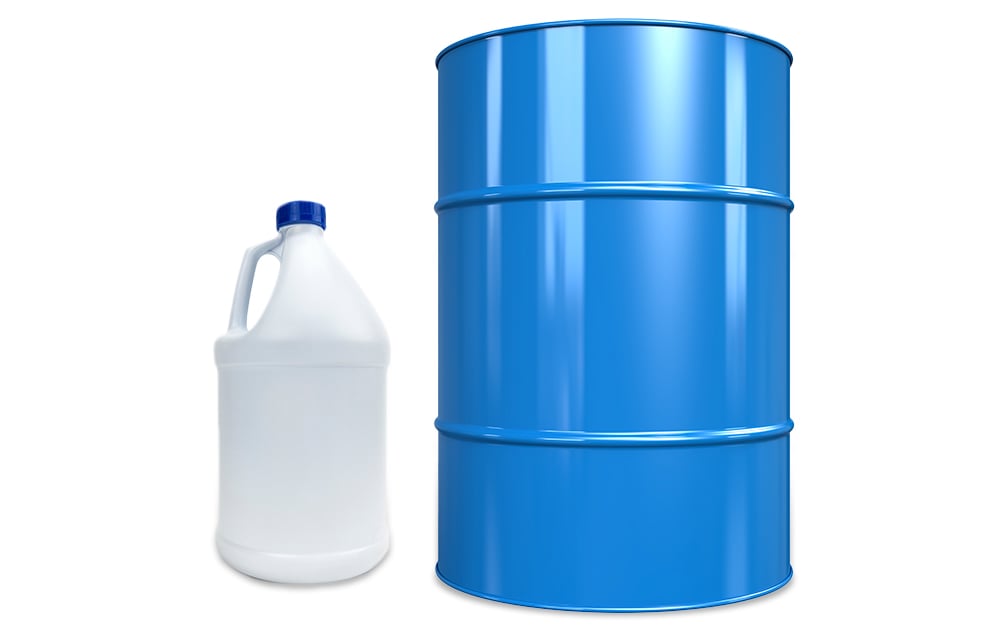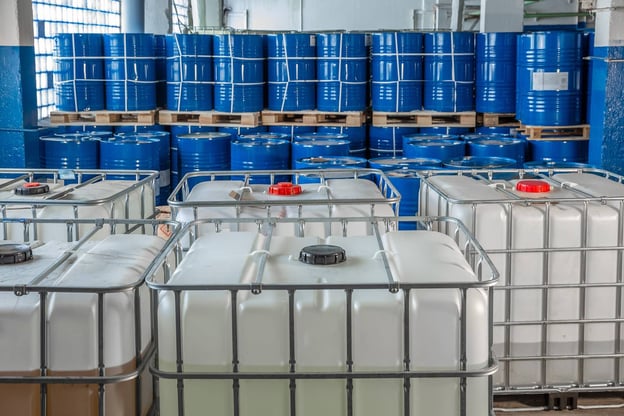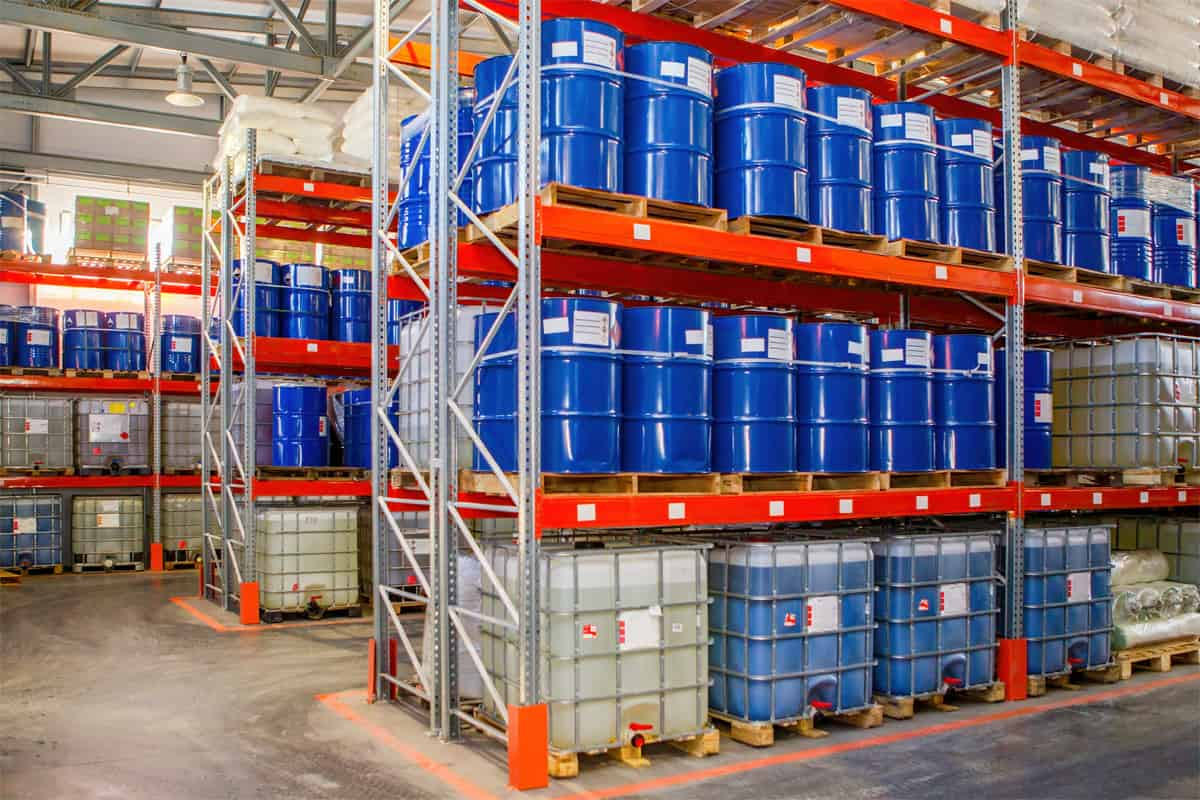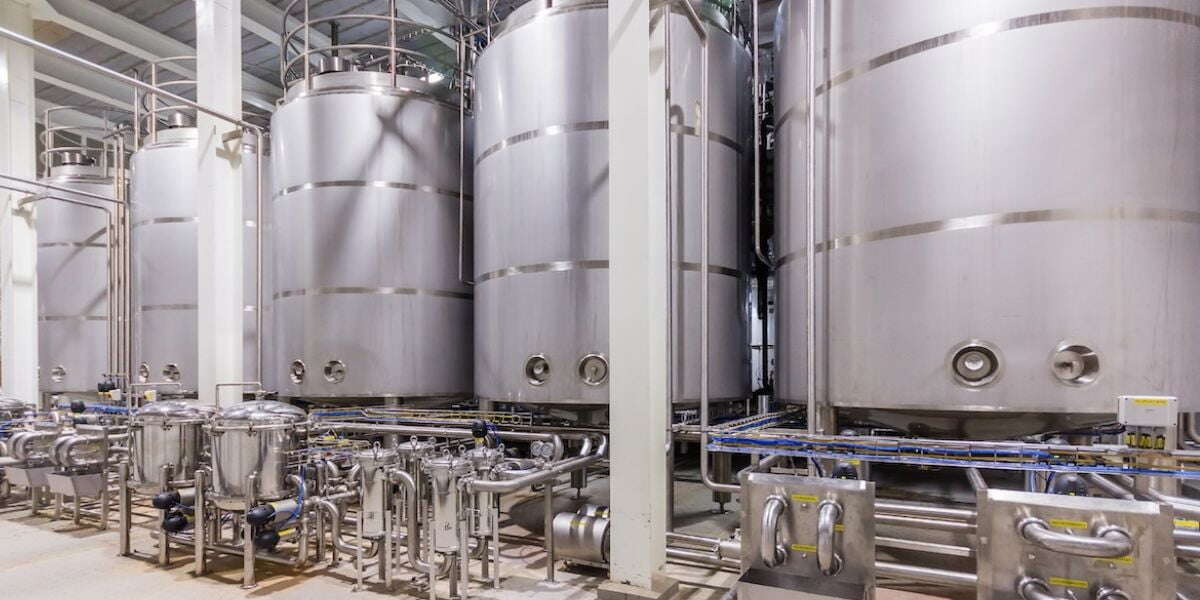
A Comprehensive Guide to Liquid Chemical Packaging Solutions
When it comes to finding the right liquid chemical packaging solution for your organization, you cannot simply select the first container you find that seems appropriate. The size and material of liquid packaging containers can play a large role in how safely and reliably your chemicals are stored and/or transported.
Even the elements of heat, cold, and UV rays can affect the type of packaging that is suitable for your operation. This comprehensive guide will go over the most important aspects of liquid packaging and explain the importance of working with an expert to find the best solution for your needs.
Considerations For Packaging Liquid Products
The first step in identifying the best packaging solution for various liquid chemicals is to understand the specific properties of the chemical in question. The chemical bottling procedure that works for one substance may vary completely from another substance, even if they are similar at the molecular level.
At a minimum, know the following properties and how they affect your choice in liquid chemical packaging.
Temperature
Liquid chemicals must be filled and stored at the proper temperature required to maintain stability. Excessive heat or cold may impact the chemical’s performance for the end user. Additionally, certain chemicals also require specialty packaging machines engineered to perform within a certain temperature range. Use the correct machine to ensure the bottling process is smooth from start to finish without any delays or downtime.
Viscosity
Viscosity plays a large role in liquid packaging since it affects three important aspects of the bottling process. The rate at which the chemical dispenses for bottling and packaging is heavily impacted by the viscosity of the chemical. The type of bottle filling machinery used for a chemical must be carefully selected, especially if the chemical is hazardous. The machine must use enough force to fill the bottle without causing splatters or overfilling.
Particulates
If your end liquid product contains particulates, you must consider their impact on the bottling process. The average size of particulates will determine the type of machinery used to fill the containers. The filler must be able to dispense the liquid product and the particulates seamlessly into the container. Otherwise, errors can occur during the bottling process.
Container Size
Once you know the viscosity and temperature of your liquid chemical and size of any particulates, you can move on to determining the proper size for your liquid packaging containers. Container sizes can vary greatly, from just one ounce to millions of gallons. The size of the container will largely be determined by your needs and how you are transporting your liquids.
The most common sizes of small and bulk liquid packaging containers include:
- 1 Pint
- 1 Quart
- 0.5 Gallon
- 1 Gallon
- 2.5 Gallons
- 5 Gallon Pail
- 5-20 Gallon Drums
- 20 to 55 Gallon Drums
- 275 Gallon IBC Totes
- 330 Gallon IBC Totes
Material Options for Liquid Packaging Containers
Numerous material types are available for liquid chemical bottling. Some materials can support various chemicals (even hazardous ones) while others will be limited to a select few.
Intermediate Bulk Containers (IBC)
For bulk liquid packaging, IBCs are the perfect answer. They can be made of plastic or metal, and vary in flexibility. These pallet mounted containers allow for safe and secure shipment of most types of chemicals in large quantities.
Plastic
Plastic is widely used for chemical bottling because it is sturdy and cost-effective. Plastic is less sustainable than other options, but can hold a wide range of chemicals, meaning it’s often a default choice for manufacturers.
Glass
Glass has long been used for small amounts of liquid in need of packaging. It does not corrode, and it provides a safe barrier to store chemicals. It can even be tinted, which is important for photosensitive chemicals. However, glass can easily break and must be handled with great care.
Carbon or Stainless Steel
Metal is an exceptional choice for storing and shipping flammable and combustible liquids. Even most solvents can safely be stored in metal containers. Most commonly, oil, gasoline and petroleum are shipping in metal 55 gallon drums. It is important to note that metal can corrode over time, and it must also be grounded/bonded to prevent igniting a flammable chemical.
Lined Drums
Certain types of chemicals react with metal drums, which indicates a barrier needs to be placed between the container and the chemical. An epoxy lacquer is used to coat the inside of the drum to protect the chemical from any reaction. The pH range for lacquered line drums is limited, so not all chemicals can be stored in this type of container.

Potential Liquid Packaging Hazards
When handling chemicals, challenges and hazards must always be taken into consideration for the safety of employees, shipping crews and customers. Before beginning your liquid packing services, you must identify hazards and determine the packaging capabilities required to handle your specific needs. Some of the most common hazards related to liquid chemicals include the following:
Physical Hazards
Some liquids or chemicals can pose threats known as physical hazards, such as burns, if they come into contact with the skin. These types of chemicals should also be handled by a liquid packaging machine to ensure human interaction (and risk of injury) is limited.
Health Hazards
Any toxic hazardous chemicals must be packaged by a bottle filling machine. These chemicals pose numerous health concerns, so the amount of human interaction must be kept to a minimum.
Environmental Hazards
Your liquid packaging company must remain in compliance with the EPA. Certain chemicals can cause extreme damage to the ecosystem if they leak during shipment or while in storage. The right containers must be selected to ensure any environmental damage is minimal.
Partnering with a Liquid Chemical Packaging Expert
If you have your chemical or blend ready for production, but simply aren’t 100% sure you know which size container to use, you may want to consider partnering with a contract manufacturer for your packaging needs. A chemical contract manufacturer, or toll blender, is staffed with industry experts with the experience to know what works and what does not. Rather than going through trial and error, you can ensure you have the right liquid packing solution from the start.
Additionally, while this guide has covered all the bases of liquid chemical packaging solutions, each organization and their chemical bottling needs are unique. Things beyond your packaging, like R&D, logistics and product formulas require custom planning to ensure the chemical or blend remains stable from filling through shipment and to the final end user.
If you are looking for a contract manufacturer to partner with your organization, Royal Chemical is here for you. We can assist you with every step of the process and identify the solutions that are best suited or your organization.
Talk to an Expert
Streamline Your Chemical Manufacturing Process
Royal Chemical’s expertise in blending, packaging and shipping can save you time, reduce costs and deliver consistent results.













%2010-min.jpg?width=246&height=328&name=New%202021%20Liquids%20(Chris%20Cairns)%2010-min.jpg)

